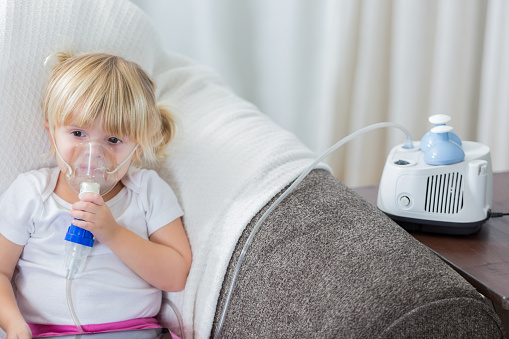There is no cure, but treatment can ease symptoms and reduce complications.

Cystic fibrosis is an inherited disorder that affects the cells that produce mucus, sweat and digestive juices, leading to severe damage to the lungs and digestive system.
These secreted fluids are normally thin and slippery. But in people with cystic fibrosis, a defective gene causes the secretions to become thick and sticky.
Instead of acting as a lubricant, the secretions plug up tubes, ducts and passageways, especially in the lungs and pancreas.
Due to advances in screening and treatment people with cystic fibrosis are able to attend school and work and have a better quality of life than in previous decades.
With screening the condition can be diagnosed within the first month of life, before symptoms develop.
Symptoms may worsen or improve as time passes. Some people may not experience symptoms until adolescence or adulthood.
People with cystic fibrosis have a higher than normal level of salt in their sweat. Parents often can taste the salt when they kiss their children.
Most of the other signs and symptoms of cystic fibrosis affect the respiratory system or the digestive system. However, adults with cystic fibrosis are more likely to have atypical symptoms, such as pancreatitis, diabetes and infertility.

Picture: iStock
Causes
An abnormality in a gene changes a protein that regulates the movement of salt in and out of cells. Children need to inherit one copy of the gene from each parent in order to have the disease.
If children inherit only one copy, they won’t develop cystic fibrosis, but will be carriers and possibly pass the gene to their own children.
Complications
Respiratory system
• Damaged airways (bronchiectasis): a condition that damages the airways, making it harder to move air in and out of the lungs, and clearing mucus from their airways;
• Chronic or recurrent infections: thick mucus in the lungs and sinuses provides an ideal breeding ground for bacteria and fungi;
• Growths in the nose (nasal polyps) because the lining inside the nose is inflamed and swollen, it can develop soft, fleshy growths. Nasal polyps can obstruct your breathing during sleep;
• Coughing up blood (haemoptysis): over time, the airway walls get thinner and teenagers and adults may cough up blood;
• Pneumothorax: this condition, in which air collects in the space that separates the lungs from the chest wall, is more common in older people. It can cause chest pain and breathlessness;
• Respiratory failure. Over time, cystic fibrosis can damage lung tissue so badly that it no longer works. This eventually can become life-threatening.

Picture: iStock
Digestive system
• Nutritional deficiencies: thick mucus can block the tubes that carry digestive enzymes from the pancreas to intestines and without them, your body can’t absorb protein, fats or fat-soluble vitamins;
• Diabetes: the pancreas produces insulin, which your body needs to use sugar;
• Blocked bile duct: the tube that carries bile from the liver and gallbladder to the small intestine may become blocked and inflamed, leading to liver problems and sometimes gallstones;
• Intestinal obstruction;
• Distal intestinal obstruction syndrome (DIOS): a partial or complete obstruction where the small intestine meets the large intestine;
• Electrolyte imbalances and dehydration: the balance of minerals in their blood may be upset. Signs and symptoms include increased heart rate, fatigue, weakness and low blood pressure.
Reproductive system
• Almost all men with cystic fibrosis are infertile. Certain fertility treatments and surgical procedures sometimes make it possible for men with cystic fibrosis to become fathers.
• Although women with cystic fibrosis may be less fertile than other women, it’s possible for them to conceive and to have successful pregnancies. Still, pregnancy can worsen the signs and symptoms of cystic fibrosis.

Picture: iStock
Treatments and drugs
There is no cure, but treatment can ease symptoms and reduce complications. Close monitoring and early, aggressive intervention is recommended.
The goals of treatment include:
- Preventing and controlling lung infections;
- Loosening and removing mucus from the lungs;
- Preventing and treating intestinal blockage;
- Providing adequate nutrition.
Medications include:
- Antibiotics to treat and prevent lung infections;
- Mucus-thinning drugs to improve lung function;
- Bronchodilators to help keep airways open by relaxing the muscles around bronchial tubes;
- Oral pancreatic enzymes to help the digestive tract absorb nutrients.
Chest physiotherapy once to four times a day helps with loosening mucus in the lungs, making it easier to cough up. Mechanical devices also can help loosen lung mucus.
Your doctor may also recommend a long-term programme to improve lung function and overall wellbeing.

Picture: iStock
Pulmonary rehabilitation is usually done on an outpatient basis and may include:
- Exercise training
- Nutritional counselling
- Breathing techniques
- Psychological counselling and group support
Surgical and other procedures are usually done as a last resort. They include:
- Nasal polyp removal.
- Oxygen therapy.
- Endoscopy and lavage.
- Feeding tube.
- Bowel surgery.
- Lung transplant.
Lifestyle and home remedies
Talk to your doctor before starting any home remedies, which include paying attention to nutrition and fluid intake, keeping immunisations up to date, exercise, eliminating smoke and encouraging hand washing to protect against infection.
For more news your way, download The Citizen’s app for iOS and Android.





